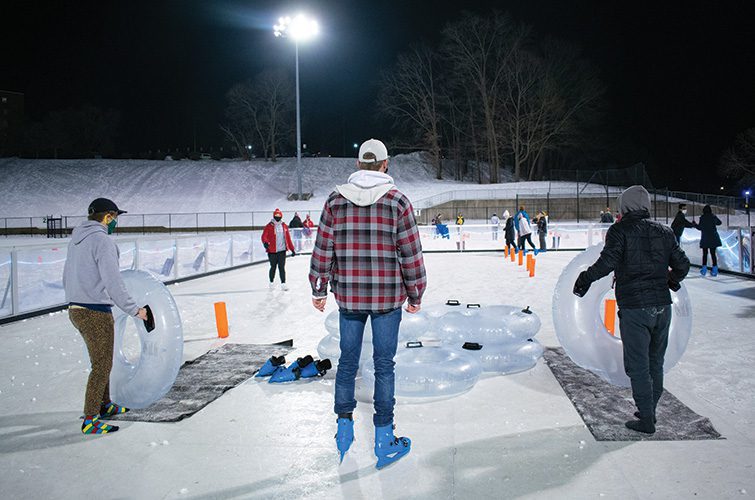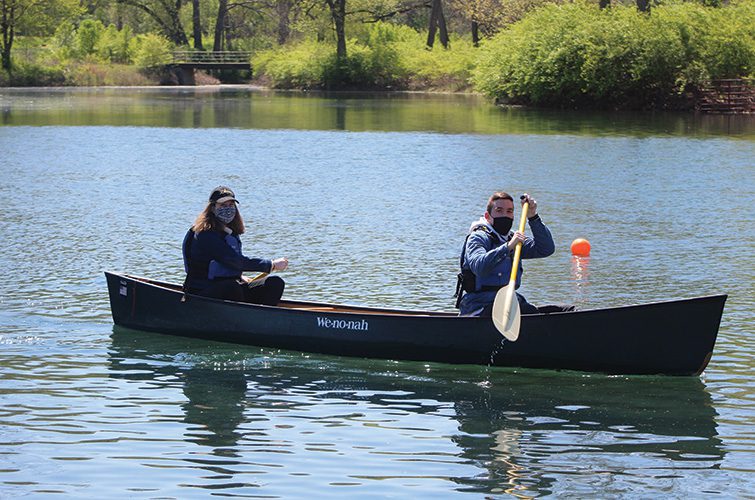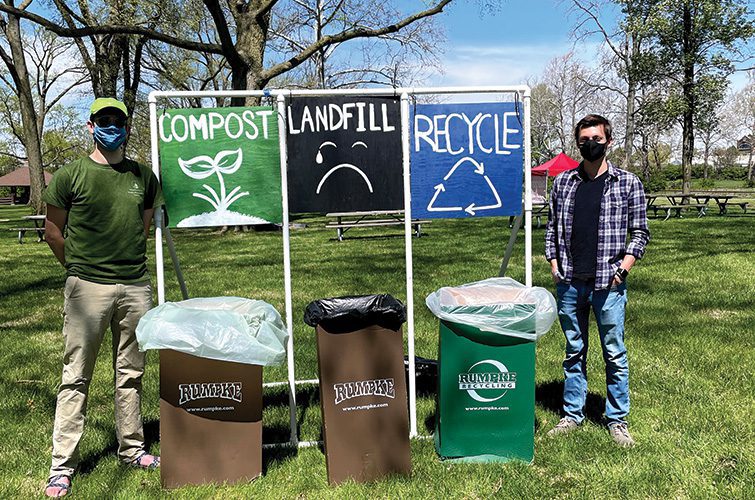From fun activities to safety measures, many recreation departments turned to creative campus collaborations to provide opportunities for students during the pandemic.
For example, Chris Fiocchi, the senior director of Campus Recreation at Clemson University, said a key partnership for his team was with Emergency Management. “The one partnership that has been really beneficial for us is the work we have done with Emergency Management over the past year with COVID-19,” said Fiocchi. “They have been an incredible partner as we have had to constantly adjust and implement plans to keep facilities open and programs running throughout the pandemic.”
Outside of pandemic safety measures, Clemson also collaborates with the physical therapy office on campus. They do so to bring academic integration into the campus recreation mission. The partnerships also look to bridge internship and practicum opportunities for students in health related fields while providing research opportunities for the recreation team.
Similarly at Kansas State University, Steve Martini, the director of Recreational Services, shared his team has a number of partnerships across campus that are small in effort but are key ways his team collaborates with the university.

These partnerships include:
- $150 donated to the Recreational Services Student Employee of the Year award by the custodial supply vendor who has also donated food for their annual student awards banquet.
- $3,000 donated by the University Alumni Association to the intramural awards program that is used to purchase champion T-shirts.
- Recreational Services sponsors a drop-off spot for the University Food Pantry, also known as Cat’s Cupboard.
- Student Health Center provides student athletic trainers to cover all on-site intramural activities.
- University Parking Services provides a free parking lot for students only.
Creative Campus Collaborations with Programming
In addition to operational partnerships, the University of Dayton (UD) Campus Recreation team collaborated with several partners to bring creative programming to students on campus.
In August 2020, campus recreation opened Old River Park for student recreation and paddling. It is a 43-acre green space complete with a picnic shelter, band stand, boathouse and one-mile moat adjacent to campus. Prior to fall 2020, Old River Park was significantly underutilized. For example, events and programs were held in limited areas of the park on average 10 times per year.
“Due to the outdoors being a COVID-19 mitigating setting for social gathering and the strict programming limitations of the time, Old River Park became an obvious asset and resource for providing the residential campus with regular, healthy activity and recreational programming,” said Amber Dierking, the assistant director of Outdoor Recreation at UD. “Facilities, Grounds and Campus Recreation made a big push to get the space ready and welcoming before the start of fall semester.”
EXTRA CREDIT: Three campus recreation professionals elaborate on understanding the value and long-term impacts of internal partnerships.
Due to collaboration efforts to open Old River Park, the location was able to host the first Fall Fest. It was a collaboration between UD Campus Recreation and Campus Activities Board. The event featured:
- Free food from Dining Service’s food truck
- Giant inflatables
- A student DJ
- Crafts
- Paddling
- Disc golf
- Pumpkin launching tournaments.
“The event had an excellent turnout. It recruited students across campus who don’t generally engage in campus recreation activities to visit the park and try kayaking,” added Dierking.

The park also hosted a spring picnic with free food provided by Dining Services the weekend following Saint Patrick’s day. After the event, it continued to be open Fridays and Saturdays for informal recreation. Creative partnerships during the spring semester included:
- EarthFest, a cross-campus service project providing space for students to prepare the sustainable garden for spring planting.
- UD Dance Ensemble rehearsals and open audience spring recital.
- A Sunset Paddle co-hosted by Campus Recreation and UD Late Night.
Collaborating Admist COVID-19
Recognizing the continued necessity for COVID-19 mitigated student engagement, UD Campus Recreation also brought a 4,300-square-foot artificial ice rink, complete with rental skates, onto campus February 3 through March 21, 2021.
“In response to student demand for increased opportunities for social gathering with their clubs and peers, Campus Recreation made group reservations available at no charge on the rink. We served 30 student organizations and 378 group attendees,” said Dierking. “Intramurals got creative and offered broomball and human curling leagues. Both an especially unique opportunity that created an engaging social opportunity for students to gather, compete and make memories.”
Inspired by the success of the Fall Festival earlier in the year, the division of Student Development at UD sponsored a Winter Wonderland event held late February. Winter Wonderland involved a number of collaborations including:
- The Center for Student Involvement
- Campus Activity Board
- Campus Recreation
- Dining Services
Participants engaged in open skate, human curling, chariot races, snowball fights, a luminary walk, a DJ and a photo booth. Plus, they could take and make crafts, or enjoy free food and hot chocolate provided by Dining Services.
EXTRA CREDIT: Saint Joseph’s University found unlikely partnerships in unique spaces to provide programming opportunities.
UD Campus Recreation also collaborated with the Residential Housing Association and Flyer Media, a media production team. They offered two residential rivalry tournaments: cornhole and kickball.
“Without opportunities for person-to-person marketing, we turned to our existing relationships on this highly residential campus to help connect with our students,” said Mark Hoying, the associate director of Member Services and Student Learning at UD. “We had 136 teams compete in a cornhole tournament. Teams first competed in living-area based divisions — residence halls, apartments or streets. Then they competed in an all-campus championship. In fact, 276 students participated in the two-day event.”

As there were no NCAA sports happening in the fall, Hoying shared Flyer Media was looking for work for their broadcast students. So, the semi-final and championship games were broadcast live on Flyer Media’s YouTube channel. The broadcast came complete with play-by-play, sideline reporting and a multi-camera production. This created a win-win situation for all collaboratives.
And when it comes to creating these winning scenarios, keeping the campus community and students in mind first will help result in a positive experience for each partner involved in creative campus collaborations.










